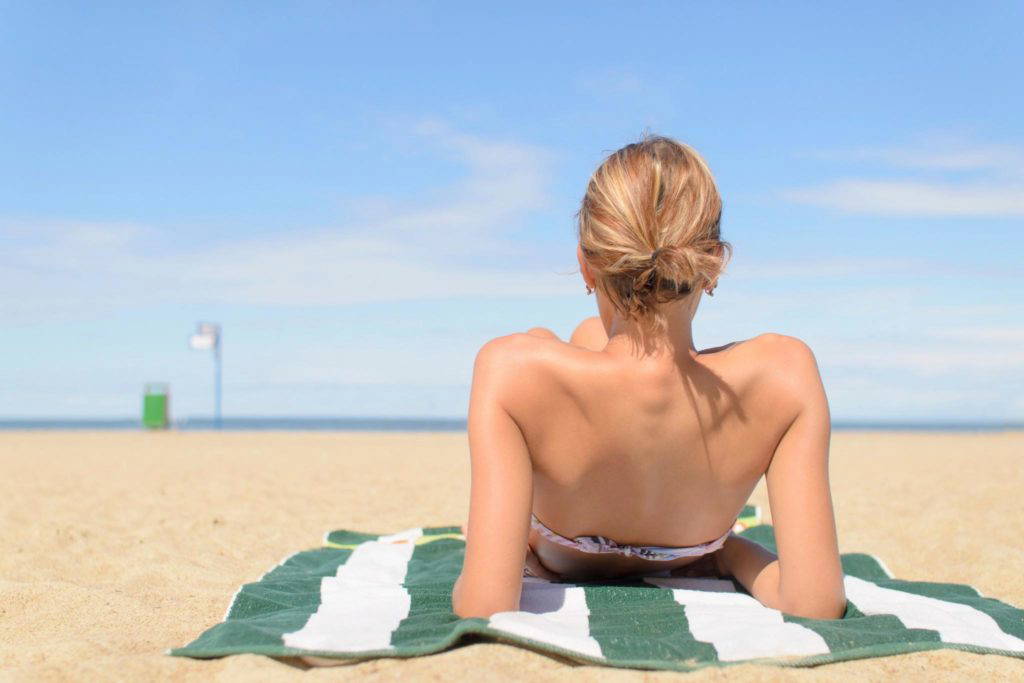
While there is an increasing awareness of skin cancer and the risks of developing the disease, there is still a lot of misinformation out there. Many people have incorrect perceptions about skincare and skin cancers such as melanoma, squamous cell carcinoma and basal cell carcinoma - e.g. that sunbeds give a 'safe base' tan before a holiday. Not only can this be confusing, it can be dangerous.
"knowing the truth about skin cancer is invaluable in helping to protect you and your family. Here we look at some common myths about skin cancer, and the truth behind them.
False. Quite simply, there is no such thing as a healthy tan. A suntan is a sign that the skin is damaged - the change in colour is down to an increase in a skin pigment called melanin. When skin is exposed to UV rays, it steps up the production of melanin in an attempt to protect it from further damage, and this can lead to a melanoma.
False. UVA and UVB rays from the sun can penetrate cloud, so your skin is actually at the mercy of the sun's rays all year round. This is of particular concern in a climate like Ireland, where we tend to forget to protect skin simply because it doesn't 'feel' warm or it is not as sunny as it would be in places where we go on holidays. Always be sun smart.
False. Most dermatologists and health experts will tell you not to use tanning or sunbeds. The World Health Organisation draws a direct link between sunbeds and skin cancer and according to the Irish Cancer Society, even one sunbed session can increase your risk of developing skin cancer. The UV rays that skin is exposed to from sunbeds can be up to 15 times higher than the midday Mediterranean sun. In short, don't use sunbeds!
False. Sun damage is not just about getting bad sunburn while in a very hot climate, the day-to-day impact of the sun rays also has a cumulative effect on skin. Brief sun exposure can be damaging, particularly for those with paler skin tones. These short, everyday exposures such as sitting in a park at lunchtime, are thought to be linked to skin cancers such as squamous cell carcinoma.
False. Some people learn the hard way that while the sun is not as intense during winter it is entirely possible to get sunburnt while taking part in snow sports. This is because the snow (much like the sea in summer) reflects the sun's UV rays, bouncing them upwards. A good-quality high-factor SPF, ideally one designed to withstand the rigours of sporting activity, should be an essential on a ski holiday.
If you are concerned about your skin or that of a loved one, arrange a consultation with me at my clinic, and download the guide to sun protection and proper sunscreen use:
Download Mr Chan's Guide to Proper Sunscreen Use

While there is an increasing awareness of skin cancer and the risks of developing the disease, there is still a lot of misinformation out there. Many people have incorrect perceptions about skincare and skin cancers such as melanoma, squamous cell carcinoma and basal cell carcinoma - e.g. that sunbeds give a 'safe base' tan before a holiday. Not only can this be confusing, it can be dangerous.
"knowing the truth about skin cancer is invaluable in helping to protect you and your family. Here we look at some common myths about skin cancer, and the truth behind them.
False. Quite simply, there is no such thing as a healthy tan. A suntan is a sign that the skin is damaged - the change in colour is down to an increase in a skin pigment called melanin. When skin is exposed to UV rays, it steps up the production of melanin in an attempt to protect it from further damage, and this can lead to a melanoma.
False. UVA and UVB rays from the sun can penetrate cloud, so your skin is actually at the mercy of the sun's rays all year round. This is of particular concern in a climate like Ireland, where we tend to forget to protect skin simply because it doesn't 'feel' warm or it is not as sunny as it would be in places where we go on holidays. Always be sun smart.
False. Most dermatologists and health experts will tell you not to use tanning or sunbeds. The World Health Organisation draws a direct link between sunbeds and skin cancer and according to the Irish Cancer Society, even one sunbed session can increase your risk of developing skin cancer. The UV rays that skin is exposed to from sunbeds can be up to 15 times higher than the midday Mediterranean sun. In short, don't use sunbeds!
False. Sun damage is not just about getting bad sunburn while in a very hot climate, the day-to-day impact of the sun rays also has a cumulative effect on skin. Brief sun exposure can be damaging, particularly for those with paler skin tones. These short, everyday exposures such as sitting in a park at lunchtime, are thought to be linked to skin cancers such as squamous cell carcinoma.
False. Some people learn the hard way that while the sun is not as intense during winter it is entirely possible to get sunburnt while taking part in snow sports. This is because the snow (much like the sea in summer) reflects the sun's UV rays, bouncing them upwards. A good-quality high-factor SPF, ideally one designed to withstand the rigours of sporting activity, should be an essential on a ski holiday.
If you are concerned about your skin or that of a loved one, arrange a consultation with me at my clinic, and download the guide to sun protection and proper sunscreen use:
Download Mr Chan's Guide to Proper Sunscreen Use